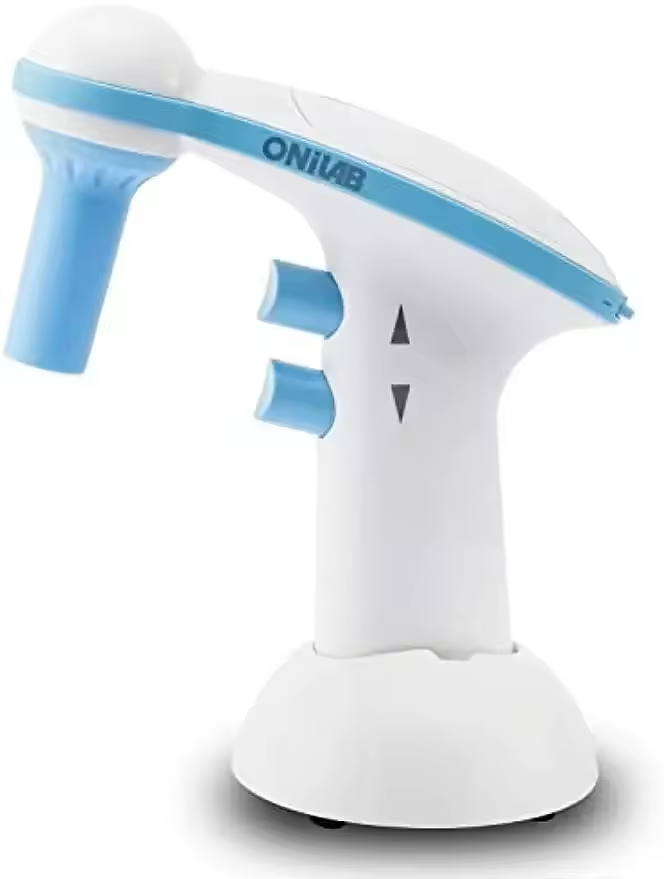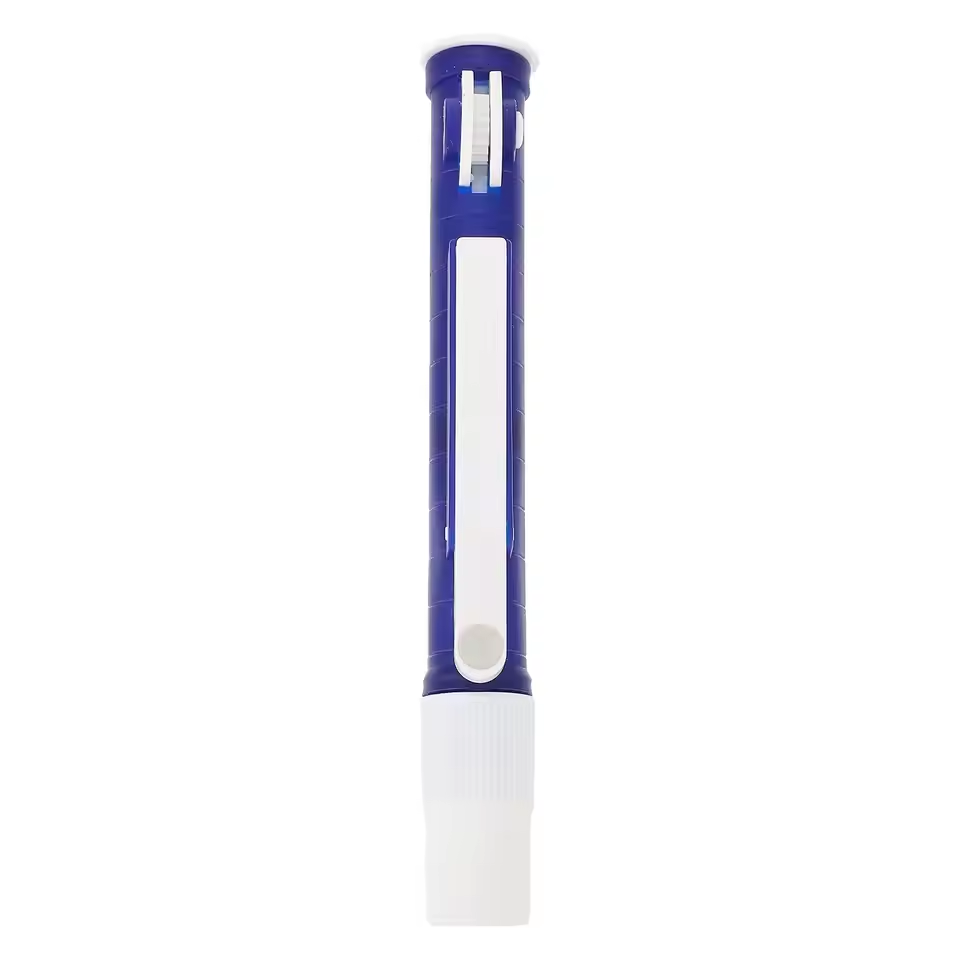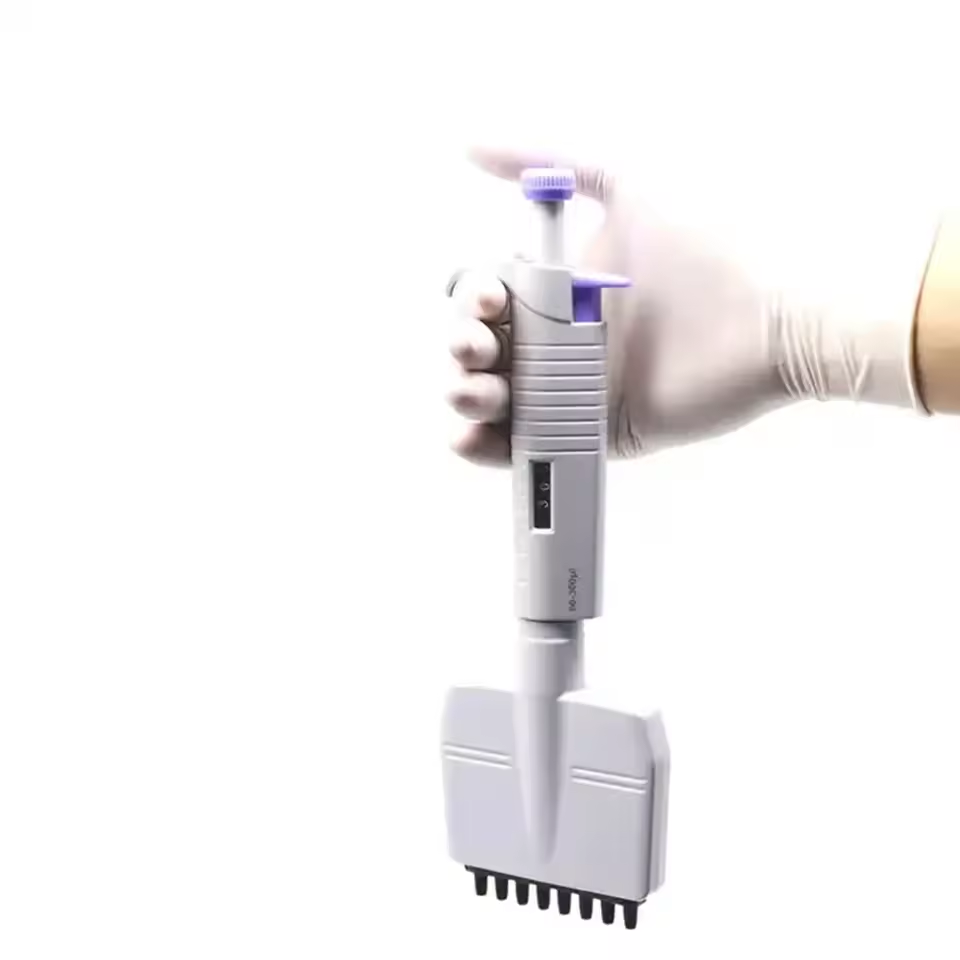What is an Electric Pipettor?
Electric pipettor is advanced laboratory tools designed to precisely transfer liquids. Unlike manual pipettors, they operate electronically, reducing human effort and minimizing errors. They are widely used in various scientific fields, including biology, chemistry, and clinical diagnostics.

Overview of Electric Pipettors
Electric pipettors automate liquid handling tasks. They use electronic controls to ensure consistency and precision. These devices come in various models, such as single-channel and multi-channel types. Many electric pipettors feature adjustable volume ranges and programmable settings. This makes them ideal for repetitive tasks in high-throughput environments.
Comparison with Manual Pipettors
Manual pipettors rely on hand motion for liquid aspiration and dispensing. They are simple and cost-effective but require more effort during use. Electric pipettors, on the other hand, offer superior comfort and reduce hand strain. They also provide better accuracy in liquid transfer. Furthermore, their programmable features enhance efficiency, especially for complex or repetitive tasks. However, electric pipettors are generally more expensive than manual ones.
Benefits of Using Electric Pipettors
Electric pipettors offer advanced features that make liquid handling faster and easier. Their benefits go far beyond precision, improving overall laboratory workflows. Let’s explore their key advantages.
Improved Accuracy and Precision
Electric pipettors ensure consistent results by minimizing human errors. They allow precise control over liquid volumes. Programmable settings further enhance accuracy during complex procedures. This makes them ideal for experiments requiring tight tolerances.
Enhanced User Comfort and Reduced Fatigue
Manual pipetting can cause strain during repetitive tasks. Electric pipettors reduce hand motion and physical effort. This minimizes fatigue and prevents repetitive strain injuries. Ergonomic designs ensure user comfort even during prolonged use.
Increased Efficiency in High-Throughput Settings
Automated features streamline tasks in high-throughput operations. Electric pipettors speed up liquid transfers, saving valuable time. Their programmability supports multitasking and batch processing. This improves overall laboratory productivity.
Types of Electric Pipettors
Understanding the types of electric pipettors is crucial when selecting the right one for your laboratory needs. Each type is designed for specific applications, offering unique benefits and features to streamline liquid handling tasks effectively.
Single-Channel Electric Pipettors
Single-channel electric pipettors are ideal for tasks that require precision with one sample at a time. They are versatile and suitable for general laboratory use, such as preparing standard solutions or transferring liquids for individual experiments. Their adjustable volume controls ensure high accuracy, making them reliable for tasks demanding precise measurements. Single-channel pipettors are widely used in smaller-scale laboratories or when fewer samples are involved.
Multi-Channel Electric Pipettors
Multi-channel electric pipettors are perfect for high-throughput environments. They enable simultaneous liquid handling across multiple samples, significantly increasing efficiency. These pipettors often come with 8 or 12 channels and are commonly used in applications like microplate-based assays. Multi-channel pipettors save time and reduce repetitive strain, making them indispensable for labs that process a high volume of samples daily.
Electronic Repeat Dispensers
Electronic repeat dispensers are designed for repetitive dispensing tasks. They can dispense the same liquid volume multiple times without requiring adjustments between dispensations. This makes them excellent for aliquoting solutions, reagent preparation, or repetitive dispensing in assays. Their programmable settings ensure uniformity and speed, reducing the chances of errors during repetitive tasks. These pipettors are particularly useful in labs handling repetitive, large-scale liquid transfers.
By understanding the functions and advantages of each type, you can choose an electric pipettor that best suits your laboratory’s requirements. Assessing the scale and complexity of your tasks will help identify the right tool.
Key Features to Consider When Choosing an Electric Pipettor
Selecting the right electric pipettor involves evaluating several critical features. These features ensure precision, efficiency, and compatibility with your laboratory needs. Let’s look at the key aspects to consider.
Volume Range and Accuracy
Choose a pipettor that accommodates the volume range you use most often. Ensure it delivers high accuracy for consistent results. Adjustable volume settings are beneficial for a variety of applications. Check the accuracy ratings to match your experiment’s precision requirements. Reliable volume control reduces errors in sensitive procedures.
Ergonomics and Ease of Use
Ergonomic designs minimize hand fatigue during long hours of use. Lightweight and well-balanced pipettors improve comfort. Look for intuitive controls for simple operation. Features like a large digital display and easy programming increase usability. Prioritizing ergonomics can prevent repetitive strain injuries in routine tasks.
Battery Life and Charging Options
Select a pipettor with a long-lasting battery for uninterrupted work. Rechargeable batteries ease the maintenance process. Quick-charging options are ideal for busy laboratories. Some models include charging docks or can operate while charging. Evaluate battery life to avoid disruptions in critical workflows.
Compatibility with Pipette Tips
Ensure the pipettor is compatible with commonly available tips. Incompatible tips can compromise accuracy and performance. Universal compatibility provides flexibility and reduces costs. Some models may require specific branded tips, so verify compatibility before purchase. This will ensure smooth workflow and optimal results.
By focusing on these key features, you can choose a pipettor that enhances laboratory productivity and reliability. Understanding these factors helps in making an informed decision tailored to your specific needs.
Applications of Electric Pipettors
Electric pipettors are versatile tools used in many laboratory and research settings. They enhance precision, streamline workflows, and handle both routine and complex tasks. Below, we explore their common laboratory uses and specialized applications in detail.
Common Laboratory Uses
Electric pipettors are essential in standard laboratory processes. Their accurate measurements ensure reliable results.
- Sample Preparation: Electric pipettors simplify transferring liquids for various experiments, such as mixing reagents or dilutions.
- Cell Culture Work: They are ideal for adding precise media volumes to cell culture dishes or flasks.
- PCR Setup: Pipettors are critical for accurate pipetting of small volumes during Polymerase Chain Reaction (PCR).
- Microplate Assays: Multi-channel pipettors load accurate volumes into plates, improving assay efficiency.
- Solution Aliquoting: These tools allow efficient and precise aliquoting of buffers, reagents, or standards into tubes.
These standard uses highlight how electric pipettors ensure accuracy and save time in daily tasks.
Specialized Applications in Research and Diagnostics
Beyond routine work, electric pipettors are essential for high-complexity tasks in advanced research and diagnostic fields.
- Drug Discovery: Pipettors facilitate high-throughput screening for potential pharmaceutical compounds.
- Genomics: They support sample transfers in next-generation sequencing and other DNA/RNA studies.
- Proteomics: Electric pipettors ensure accuracy in experiments analyzing protein structures and functions.
- Clinical Diagnostics: Pipettors are critical in handling patient samples for tests like ELISA or biochemical assays.
- Automated Workflows: In automated lab setups, electric pipettors enhance efficiency and integrate with robotic systems.
These specialized applications demonstrate the adaptability of electric pipettors in complex and innovative research areas.
By understanding where electric pipettors shine, labs can select the right models to match their operational demands.
How to Maintain and Calibrate an Electric Pipettor
Proper maintenance and calibration of electric pipettors ensure their longevity and reliable performance. Regular attention to these practices can prevent issues and maintain the device’s accuracy.
Routine Maintenance Tips
Routine maintenance keeps electric pipettors functioning effectively. Follow these simple steps:
- Clean After Every Use: Remove any residual liquids or contaminants from the pipettor.
- Inspect for Damage: Check seals, o-rings, and moving parts for wear or cracks.
- Store Safely: Keep your pipettor in a clean, upright position when not in use.
- Use Approved Cleaning Solutions: Avoid harsh chemicals to prevent damage to the pipettor’s components.
- Protect Against Overloading: Confirm volume settings before use to avoid exceeding capacity limits.
These practices allow smooth daily operation and prevent degradation over time.
Importance of Regular Calibration
Calibration ensures that electric pipettors maintain accuracy in liquid measurements. It is critical for experiments requiring precision.
- Consistent Results: Calibration eliminates discrepancies and maintains reproducibility in laboratory tasks.
- Comply with Standards: Regular calibration adheres to laboratory regulatory requirements.
- Prevent Errors: Uncalibrated pipettors may cause inaccuracies in critical experiments.
- Schedule Routine Check-ups: Perform calibration every 3–12 months or as recommended by the manufacturer.
- Professional Assistance: Engage certified technicians or services for comprehensive calibration.
Ensuring calibration prevents inaccurate results and workflow disruptions.
Troubleshooting Common Issues
Electric pipettors can experience operational problems. Resolving these promptly minimizes interruptions.
- Volume Inaccuracy: Check calibration or verify compatibility of pipette tips used.
- Leaks: Inspect seals and replace damaged components immediately.
- Error Messages: Refer to the user manual for troubleshooting steps on digital pipettors.
- Battery Failure: Charge fully or replace batteries if needed.
- Sticking Mechanisms: Lubricate moving parts carefully to restore smooth operation.
Quick fixes ensure pipettors remain functional, reliable, and ready for use.
By maintaining and calibrating electric pipettors regularly, laboratories can optimize efficiency and performance while avoiding costly replacements.
Top Brands and Models of Electric Pipettors
Selecting the right electric pipettor often involves exploring established brands and popular models. Leading manufacturers and their innovative features ensure reliable performance and meet diverse laboratory needs.
Overview of Leading Manufacturers
Several companies are known for their outstanding electric pipettors. They combine precision, durability, and ergonomic designs.
- Eppendorf: Renowned for high-quality pipettors with intuitive controls and versatile applications.
- Thermo Fisher Scientific: Offers durable models with advanced programmability and consistent accuracy.
- Gilson: Known for ergonomic designs and efficient liquid-handling solutions.
- Sartorius: Provides robust pipettors with customizable settings and user-friendly interfaces.
- Nichiryo: Focuses on lightweight and affordable pipettors with excellent durability.
These manufacturers prioritize user comfort, precision, and reliability in all their models.
Popular Models and Their Unique Features
Top brands produce models tailored to specific laboratory tasks. Understanding unique features helps identify the right choice.
- Eppendorf Xplorer: Programmable, lightweight, and ideal for complex protocols.
- Thermo Fisher Finnpipette Novus: Known for user-friendly adjustment settings and excellent ergonomic features.
- Gilson Pipetman M: Versatile, with digital controls and high accuracy levels.
- Sartorius Picus NxT: Compact, featuring an advanced touch screen and calibration alert system.
- Nichiryo Nichipet EX II: Durable, budget-friendly, and suitable for general lab workflows.
These models highlight strengths such as programmability, ease of use, and robust performance.
Whether for general use or specialized tasks, choosing trusted brands ensures accuracy and efficiency in liquid handling.
Tips for Selecting the Right Electric Pipettor for Your Needs
Choosing the ideal electric pipettor requires careful evaluation of your lab’s specific needs and circumstances. Different factors such as workflow, budget, and expert opinions can guide your decision.
Assessing Your Workflow and Requirements
Understand the liquid handling tasks in your lab. Determine the required volume range and accuracy levels. Evaluate if single-channel or multi-channel pipettors meet your sample throughput. Consider whether repetitive tasks need features like electronic repeat dispensers. Match pipettor features to your lab’s daily operations for optimal performance.
Balancing Budget with Features
Set a realistic budget for your pipettor purchase. Compare the costs of models with similar features. Consider long-term benefits such as efficiency and reduced fatigue. Factor in maintenance and calibration costs for reliable performance. Opt for quality even if it slightly exceeds the budget.
Seeking Recommendations and Reviews
Consult colleagues or experts for trusted brand suggestions. Read user reviews to assess performance and reliability. Research common issues or limitations for specific models. Check manufacturer support and warranty options. Reliable feedback helps choose a pipettor confidently.